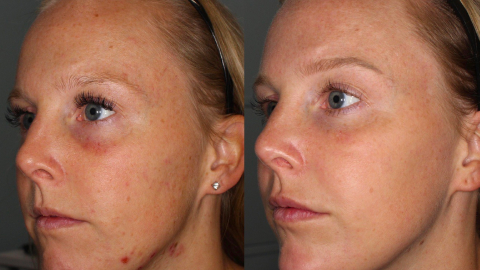Acne
What is acne?
Acne is arguably the most common skin disorder. It affects up to 90% of teenagers, but about 10% of adult men and up to 30% of adult women experience it. It can show up as whiteheads, blackheads, pimples, nodules/cysts and can cause scarring. It usually involves the face, but also often affects the chest and back.Genetics, environmental and hormonal components play a role – overwhelmingly, acne is bad luck. There are weak associations between acne and diet – such as high-sugar diets or low-fat milk – however this evidence is not strong and may not apply to everyone.

What treatments are available for this condition?
Many treatments in the realm of cosmetic dermatology can help. Skincare with salicylic acid/benzoyl peroxide, prescription topicals, and also medications (oral contraceptives, spironolactone, isotretinoin) can be discussed with your physician. In terms of cosmetic dermatology procedures, the following are often used in combination with traditional treatments:
- Salicylic acid peels: A 30% salicylic acid peel in PEG (polyethyleneglycol) will hasten the recovery of an acne breakout by both treating clogges pores (follicular hyperkeratinisation) and reducing inflammation. The PEG vehicle delivers the salicylic acid to pores moreso than surrounding skin, and so peeling after the procedure is minimal.
- Blue LED light: A high-intensity blue LED is often combined with a salicylic acid peel. This targets the Cutibacterium acnes bacteria that plays an important role in acne.
It is often best to get acne under control before moving on to treat acne scarring.

